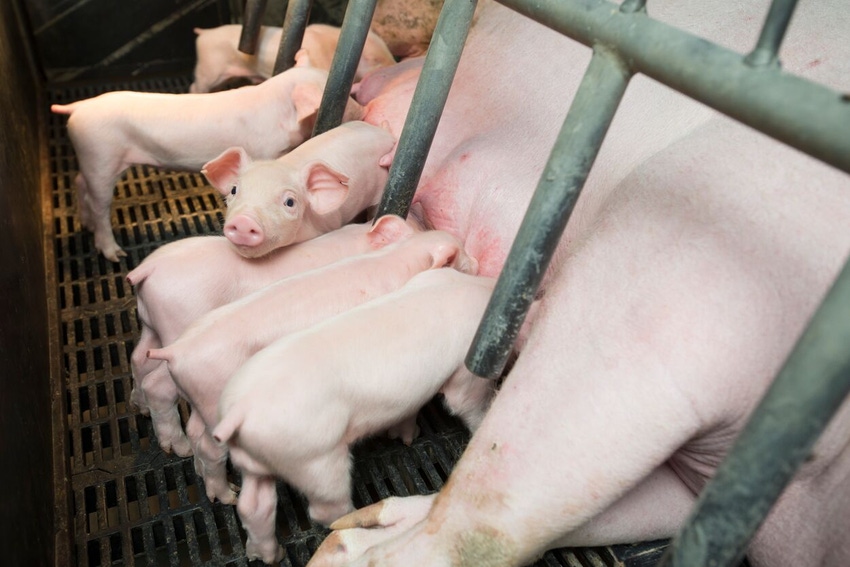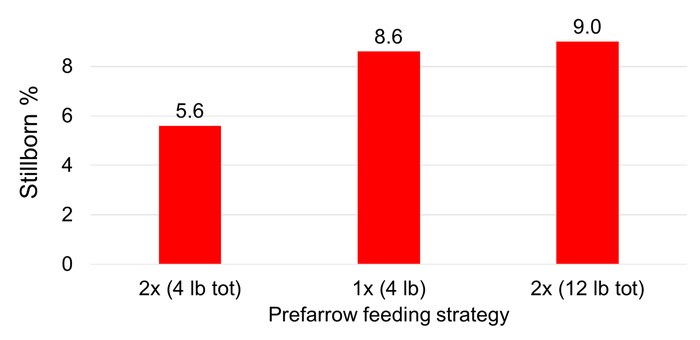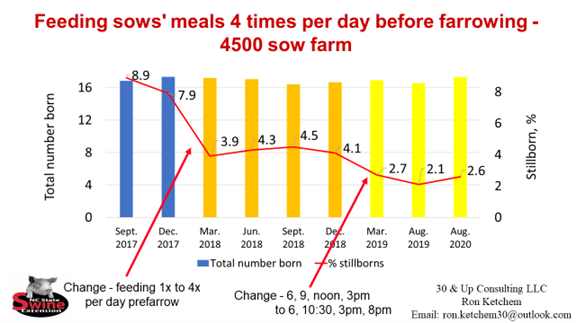Feeding strategies to reduce farrowing duration, boost piglet survival
Feeding sows multiple meals prefarrow or top dressing CaCl prefarrow can be utilized to reduce farrowing duration, lower percentage of stillborn piglets.
June 30, 2022

Piglet vitality is an important component trait of maximizing reproductive throughput. We believe there are existing management and nutritional technologies available to enhance piglet vitality that are perhaps underutilized. Based on data from Denmark, the United States has developed a concept of feeding sows multiple meals prefarrow versus feeding once daily prefarrow to reduce the number of stillborn piglets. Data from Miller and Kellner (2020) and Ron Ketchum are shown in Figures 1 and 2, respectively. These projects both suggest feeding multiple meals prefarrow can reduce the percentage of stillborn piglets.


Besides feeding multiple meals prefarrow, top dressing calcium chloride prefarrow has consistently shown to reduce the number of stillborn piglets. Figure 3. shows the results of research projects that top dressed calcium chloride prefarrow. On average, top dressing calcium chloride prefarrow reduced the percentage of stillborn piglets by 2.5%.
Hence, the objective of our current study was to evaluate the impact of prefarrow feeding strategies on sow farrowing duration and percentage of stillborn piglets. Sows (n=215) were farrowed at a commercial sow farm in eastern North Carolina. Genetics of the sows were PIC. Farrowing rooms were curtain sided with natural ventilation. Sows were randomly allocated to one of three prefarrow feeding strategies. Upon entering a farrowing stall, sows were fed either 5 pounds of feed in the morning, 2.5 pounds of feed in the morning (6 a.m.) and 2.5 pounds of feed in the evening (6 p.m.) or 5 pounds of feed in the morning top dressed with 50g of TransRite Sow Ultra (CaCl). Sows started dietary treatments and farrowed, on average, day 112.6 and day 115.6 of gestation, respectively.
Results from the study are shown in Figure 4. Farrowing duration differed between treatments. Both sows fed twice per day prefarrow and sows top dressed with calcium chloride prefarrow had shorter farrowing durations than sows fed once per day prefarrow (4:51 and 5:26 vs. 6:49, respectively). First parity sows had shorter farrowing duration than multiparous sows (4:23 vs. 6:08). Sows fed calcium chloride prefarrow had a lower percentage of stillborns when compared to sows fed once per day prefarrow (6.1 vs. 9.2%) while sows fed twice per day prefarrow did not statistically differ from the other two treatments (7.3% stillborns). An increase of one piglet in total number born increased percent stillborns by .24%.
Collectively, results from the current and past studies suggest either feeding sows multiple meals prefarrow or top dressing calcium chloride prefarrow can be utilized to reduce farrowing duration and lower the percentage of stillborn piglets, perhaps reducing the need for farrowing assistance and allowing for improved farm labor efficiency.
We would like to thank the collaborating commercial production system and the U.S. Pork Center of Excellence for funding this project through the Swine Research and Education Experience program. The authors would also like to thank Hubbard Feeds for their collaboration and donating the TransRite Sow Ultra. References available upon request. Questions can be sent to Mark Knauer via email.
You May Also Like



